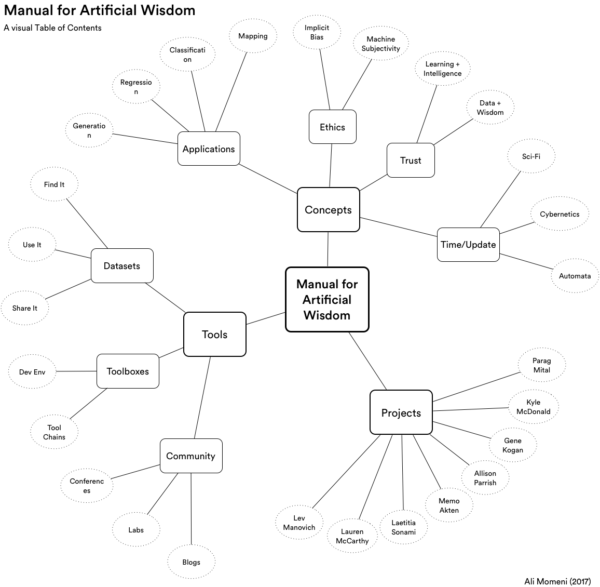Creative ML and AI
Creative ML and AI
- 2017
- Workshop, Book
Description
There is much speculation about how artificial intelligence (AI) and machine learning (ML) will shape our future. While the extent and direction of this impact remain to be seen, AI will surely transform social, legal, economic transactions across societies. Some experts warn us to expect AI and ML to be biased, others have experimentally shown that biases in our datasets translate directly to biases in classifications and predications made by AI (see Frankl-Duval 2016, Garcia 2016, or Baeza-Yates 2016). Some experts go further to assert that the biases in AI algorithms are reinforced by the lack of diversity in the community of computer scientists, developers and data wranglers that are pushing us into the next epoch of human-AI interaction. We have our work cut out for us.
Between the Spring of 2016 and the Spring of 2017, I organized and hosted three workshops in "Machine Learning for Artists and Designers" at Carnegie Mellon University's Frank-Ratchye STUDIO for Creative Inquiry. These workshops were focused on introducing community members with an interest in creative application and critical analyses of AI and ML to a select set of toolboxes that were at least partly designed for non-experts. With generous support from several units at CMU's, I worked with a group of faculty from across the university to identify 30-40 students to participate in each workshop. I drew from our rich community of media artists and creative technologists to bring in three world-class practitioners of creative AI to spend a day or two with our students and share their insights in creating three of the leading resources for artists and designers working with AI and ML. The workshop's cast and contents were as follows:
- Using the Gesture Recognition Toolkit, by Nick Gillian
- Workshop Agenda (held on April 9, 2016)
- In-workshop Notes
- Designing real-time interactions using the Wekinator , by Rebecca Fiebrink
- Workshop Agenda (held on Sep 24-25, 2016)
- In-workshop Notes
- Creative Applications of Deep Learning w/ TensorFlow, by Parag K. Mital
- Workshop Agenda (held on Mar 24-25, 2017)
- In-workshop Notes
This series is part of my broader interest in creative explorations of AI and ML. This effort includes the creation of ml.lib, an ML/AI toolbox for artists and musicians working with Max and PureData, as well the publication of a "Manual for Artificial Wisdom", modeled after my "Manual for Urban Projection", co-authored with Stephanie Sharman in 2015. You can view and and table of contents of "Manual for Artificial Wisdom" here.
- Using the Gesture Recognition Toolkit, by Nick Gillian
Acknowledgements
"Machine Learning for Artists and Designers" workshops were generously supported by Carnegie Mellon's College of Fine Arts, School of Art, School of Architecture, School of Design, School of Music, School of Drama, Human Computer Interaction Institute, Carnegie Institute for Technology, the Frank-Ratchye STUDIO for Creative Inquiry and the Integrated Design Engineering Art and Technology programs.
"A Manual for Urban Projection" was sponsored by Creative Capital.
